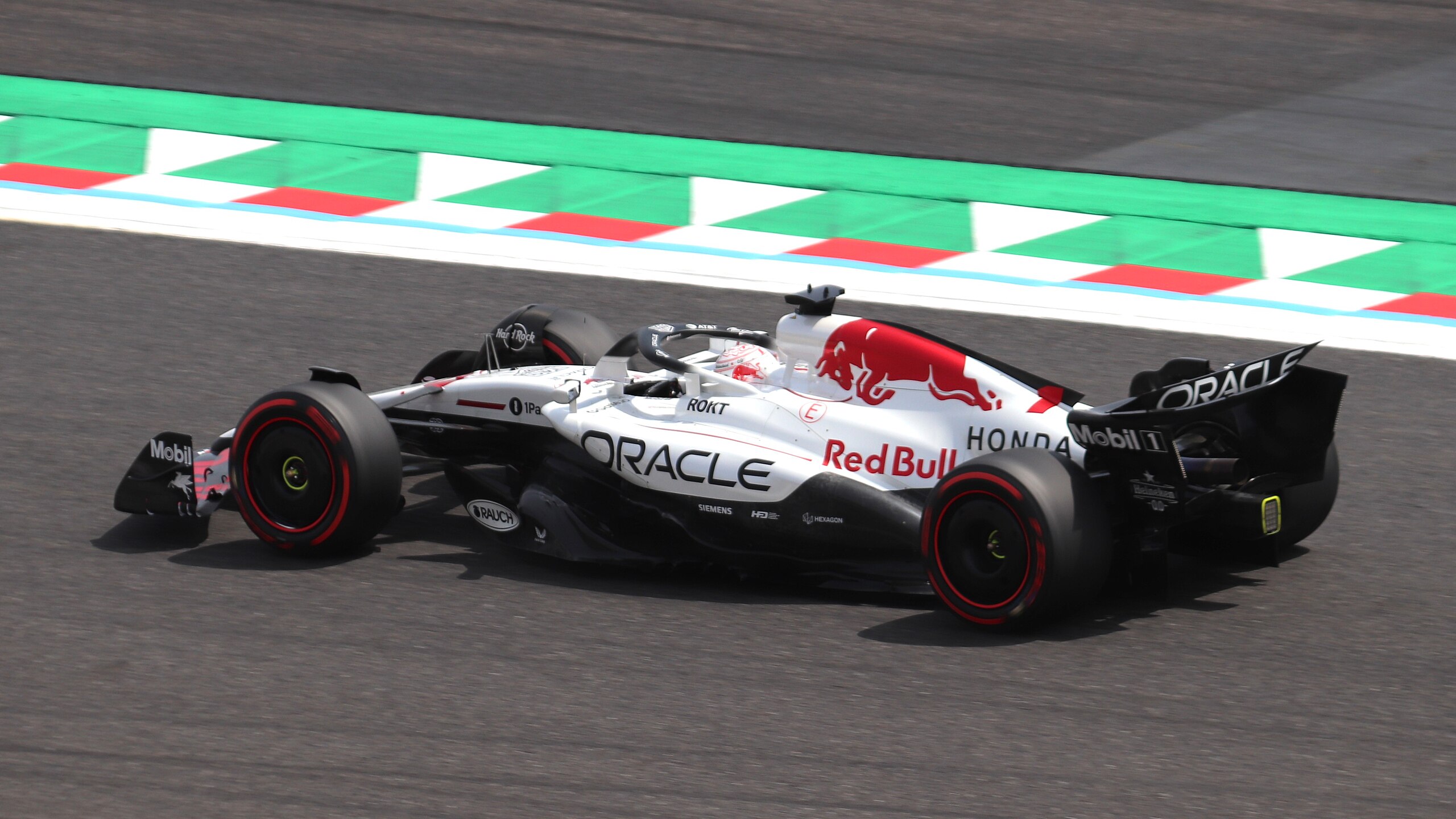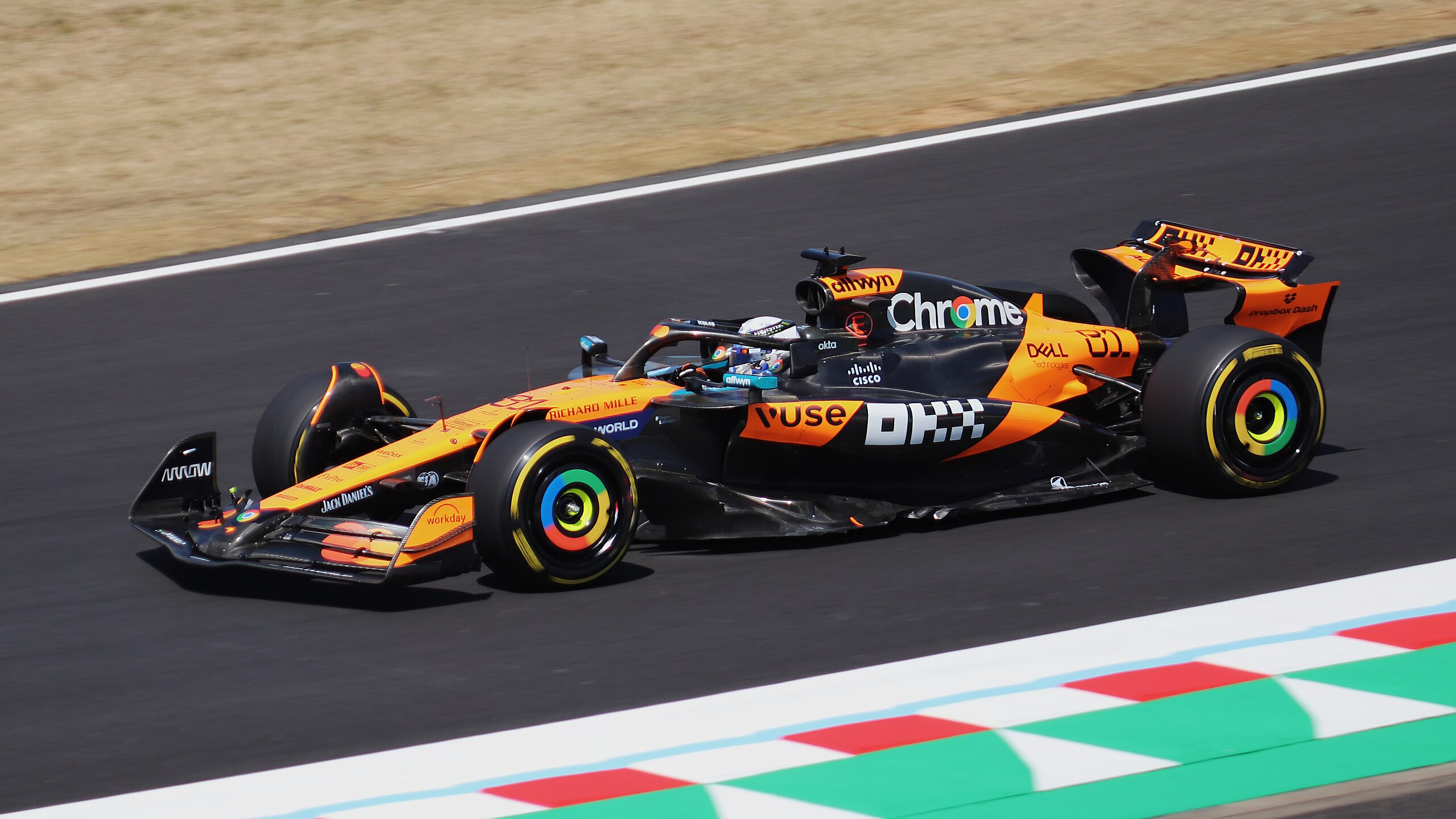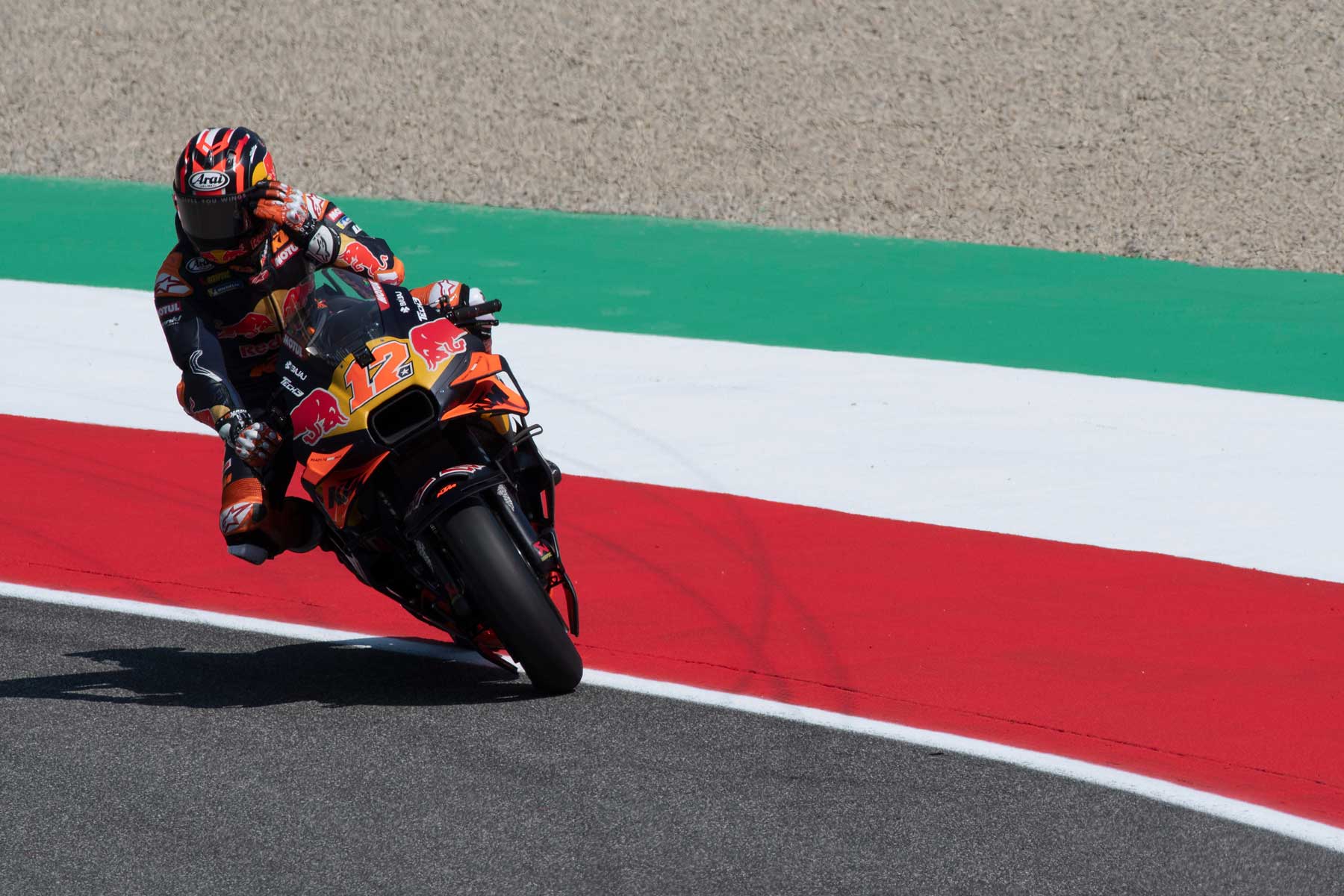Are you willing to sponsor?
Are you ready to explore the transformative power of athlete sponsorship for your brand? Click here to learn more about how sponsorship can help brands grow and thrive in the exciting world of motorsports.
By Silvia Schweiger| Posted August 19, 2022 | In Formula 1, Formula1
How many times have you happened to watch a Formula 1 race on TV and heard very specific words from commentators, drivers, team principals or through team radios? Deepening knowledge of some of the special features of motorsport can be interesting for a neophyte new to the premier class of four-wheelers but also for super enthusiasts not comfortable with the English language.
In this short article, we will try to explain in a nutshell the 10 most interesting terminologies to know so that you don’t miss anything when watching a Formula 1 GP.
When we hear about rubber degradation, phenomena called graining and blistering are probably taking place.
The first (graining, literally graining) refers to the formation of cracks on the tire surface, which reduce its grip on the ground. The second (blistering, literally blisters) is related to the high temperatures that are reached after a significant number of laps are made, causing first blisters and then cuts on the rubber surface.
The development of tires is the result of very high technology: engineering and chemical studies as well as thousands of kilometers of testing are required so that the compound (commonly called in F1, compound) of the rubber can withstand extreme conditions.
Yes, it is possible. For the graining that comes in the form of ripples on the tire, you see a kind of stripe on the tire; basically the rubber is not completely uniform but you can feel a stripe of apparently different color. A hot compound and contact with the asphalt at high speeds (especially under braking and cornering) promote the elevation of these small ridges in certain areas of the tire.
Several factors contribute to its formation: oversteer and understeer (which we will discuss later), incorrect suspension adjustment or too high tire pressure.
It comes to blistering when One or more strips of the first layer of rubber are missing. The main cause is too high internal temperature of the tire, such as in situations of high aerodynamic load. Blistering is a much more serious phenomenon than graining: the tire develops real blisters that open up, leaving “holes” in the tire. The performance of the car is greatly affected.
When we see the Formula 1 cars during the formation lap, pre-launch laps or under safety car conditions, it is possible to notice how the drivers zig-zag by drawing waves on the track. Their intent is to achieve/maintain optimal tire temperature and make their surface adhere to the asphalt as evenly as possible. By doing so, the running wear should be ideal. [1]
Very hot terms during the start of the 2022/2023 Formula 1 season, porpoising and bouncing are two different but related issues. Let’s go in order.
Porpoising is a high-frequency vertical oscillation caused by the interruption of aerodynamic flow that causes the car to rise, which will lower once flow circulation resumes. All within a few hundredths of a second. Porpoising as a term (and F1 is always very creative in coming up with these comparisons) echoes the leaping of porpoises in the sea as they advance by leaping forward.
Bouncing, literally translated as “bouncing,” is due to particularly stiff suspension configurations that cause the rider to “jerk” when the asphalt is not perfectly flat at high speeds.
To limit such phenomena, the FIA imposed restrictions during the current season on the flexibility of the cars’ bottoms, recognized as one of the triggers.
The one who suffered the most (of porpoising) was Lewis Hamilton during the Baku Grand Prix, who had to endure vertical loads of up to 10G, due to a Mercedes W13 struggling on these kinds of issues.
“Baku? The most painful I’ve ever experienced,” said the Briton.
“I always want to get in the car. I simply don’t want to bounce. I would do anything to avoid it. I’m worried every time I get back in the car. There were many times when I didn’t know if I could make it or if I could keep the car on the track. I almost lost it several times in the high-speed spots. The battle with the car was intense.” he added. [2]
Certainly porpoising is a transient phenomenon, and F1 teams will be able to solve it, but right now drivers are under a lot of physical stress.
Another issue on the race day agenda is pit wall strategy. In order to plan a weekend that sees a driver victorious, it is not enough for him to have the most talent or the fastest car-the entire team must carry out a winning strategy with pit stops that very often make a difference on the race pace.
Overtaking on the track is not the only way to gain positions: l’undercut, it is called an undercut when the driver makes a pit stop before the cars following him, so that he has a stint (period – phase of the race with a certain tire) advantage with new tire over the degraded tire of rivals. A fresh compound allows you to have a significant advantage-especially in the early laps-and therefore get the position of whoever was ahead, with equal stops for both.
The other side of the coin involves lengthening the stint as much as possible on used tires, allowing for a newer tire advantage over those who have advanced the stop: in this case, it is called an overcut. It can occur for several reasons, depending on tire degradation or weather conditions (dry to wet).
What affects both strategies is certainly thesetup configuration and the driver’s driving: blockages, rough passes over curbs and suboptimal temperature management all go to negatively affect tire life, forcing the car into unplanned early stops. [3]
Conversely, careful driving aimed at saving rubber can put the driver and the team in a position to use the rubber longer and be able to afford an overcut.
Across the entire automotive landscape-which includes both everyday and performance cars-there are dynamics to be aware of for sporty but also safe driving: understeer and oversteer occur in situations of loss of grip on the asphalt. Specifically, when it is the front of the car that suffers we are in the presence of understeer; conversely, in the case of the rear we speak of oversteer.
If a car in a corner “loses” the rear end with the front wheels steered, we are in the case of oversteer. In some areas such as drifting, it is an intentional maneuver that is more simply recognized as a controlled skid, which the driver is called upon to countersteer with particular timing and technique.
If, on the other hand, the car is in a wheel-steered condition but is still going straight (the front end continues straight), this is understeer. Obviously this is an extreme example, and when you refer to understeer in F1 you are dealing with cars that do not respond lightning fast to steering impulse but do not go straight, they simply have more grip on the rear.
In F1, neither are particularly valued in the extreme; in fact, trim adjustment serves to prevent both situations so that the driver’s driving is clean and the tires are not stressed more than necessary. [4]
To explain as simply as possible this phenomenon-attributed to the Romanian engineer Henri Coanda during World War II-just do a little home experiment: by placing a spoon in the water jet of a sink, you can notice how the fluid takes the direction dictated by the shape of the spoon, which will move toward the wet end. This example helps us better understand how thesoil effect works.
According to the Coanda effect, the flow of a moving fluid in contact with a curved surface will tend to follow the curvature of the surface rather than continuing to travel in a straight line.
This discovery played a major role in the study ofaerodynamics as we know it today.
In Formula 1, this principle is used to efficiently generate aerodynamic load on cars: guiding and conditioning air flows to a precise point allows the load to be maximized where it is needed. [5]
This is one of the most frequently used terminologies within team radio between driver and pit wall during races, especially toward the end.
Using the words of former driver Marc Gené (current technical commentator for Sky Italia along with Carlo Vanzini) it is possible to summarize the lift and coast strategy in a few simple steps.
If a driver is used to braking 100 meters before a curve by abruptly switching from the accelerator to the brake, in a lift-and-coast condition he or she is called upon to lift his or her foot 150 meters before-allowing the car to slow down by inertia-and finally press the brake 50 meters before the curve (distances purely indicative).
Although it may seem obvious to say, F1 cars do not run at the top of their game for 60-70 consecutive laps. This technique is intended to safeguard brake temperature, tire life and gasoline reserve.
Saving fuel can be useful for pushing when necessary for the purpose of overtaking. Similarly, being able to preserve the state of the tires allows for more grip the longest possible time. [6]
Follow us on our social media to stay up-to-date with the F1 world.
[1] – https://flowracers.com/blog/graining-and-blistering-in-f1/
[2] – https://www.grandprix247.com/2022/07/18/bouncing-and-porpoising-formula-1-terms-that-are-here-to-stay/amp/
[3] – https://amp.formula1.com/en/latest/article.undercut-vs-overcut-why-tyre-strategy-was-so-finely-poised-in-monaco-and-why.1YYMDkEBnFols8bDWtSXiz.html
[4] – https://www.essentiallysports.com/f1-news-what-is-oversteer-and-understeer-in-formula-one/amp/
[5] – https://www.formula1-dictionary.net/coanda_effect.html
[6] – https://www.hitc.com/en-gb/2022/03/20/f1-lift-and-coast/
Are you ready to explore the transformative power of athlete sponsorship for your brand? Click here to learn more about how sponsorship can help brands grow and thrive in the exciting world of motorsports.

Associate Director, Executive Marketing and Commercial at RTR Sports Marketing, a London-based sports marketing company specializing in motorsport for over 25 years. Without sports, life is boring
The online platform where you can discover the latest trends, strategies and insights from the exciting world of sports marketing.
View our blog
July 4, 2025
When, in 1950, the Formula 1 kicked off at Silverstone, no one could have predicted that, 75 years later, it would become much more than a sport. Today, F1 is a global phenomenon, a cultural,[...]
Read More
July 1, 2025
In the complex and exciting world of Formula 1, performance no longer belongs exclusively to wind tunnels and race strategies. It also unfolds in boardrooms, brand labs, and experiential mark[...]
Read More
June 26, 2025
This content is password protected. To view it please enter your password below: Password: [...]
Read MoreIn an era where it is possible to get anywhere with a click, there is a strong temptation to approach teams and properties directly for sponsorship projects.
By doing so, we are convinced that we are shortening the value chain, saving time and money. However, these DYI methods are anything but risk-free and what initially appears to be a competitive advantage soon turns into a problem that is difficult to resolve. That’s why there are agencies. And this is why you should rely on us for your sponsorships.
When first approaching a sponsorship or sports marketing project, it is difficult to know immediately which stakeholders are correct, what the decision flow is, and what the right timelines are for each process. Sports is a very specialized field of action, and fitting effectively into its paths can take a lot of time and therefore money. We, on the other hand, know referents and spheres of action and know who to talk to, when and how. So you are also more effective.
Sports is an immense passion, and for our heart colors we would be willing to do anything. But business is a different business, and it is important to make the best possible strategic decisions based on independent research, statistics and reliable data. A sports marketing and sports sponsorship agency like RTR has an objective, 360-degree picture of the scenario and can tell you what is really best for you: which sport, which athlete, which team. This is because we possess a great deal of data and information on ratings, segmentation and attitudes. Because the numbers don’t lie. Never.
Activations are the real heart of sports sponsorship. Without them, there remains only a blank sticker on a motorcycle, car or uniform and no contact with the public, no emotional connection, no impact on the bottom line. Then how do you do it? It certainly won’t be the teams or the athletes who will help you leverage sponsorship and enjoy the many marketing rights you have paid for. To bring out the best in a sports marketing project you need an agency that knows how to use sponsorship to engage the fanbase on the Web, to reach out to Shopping Centers, to organize hospitality, to develop B2B and B2C opportunities, and to get “your” athletes in front of millions of potential consumers.
Would you ever go to the dealer who sold you the car and ask if the competitor’s car is better? No, of course. So, how do you expect to get firm measurements of the effectiveness of your sponsorship if you do not rely on someone super partes? At RTR, we have always worked with independent third-party agencies that allow us to know the return on any exposure of your brand on TV and in the media. In addition, we believe in calculating ROI as the ultimate measure of your success-so we can tell you for every penny you spend how much you are making.
We have been involved in sports sponsorship and sports marketing for more than 15 years. We are consultants in the sense that our goal is to maximize your investment, but we are also an agency that manages the project from start to finish. We have been doing this since 1995 with passion and professionalism, following three principles that have become cornerstones of our business: independence, verticality and transparency.
I would like to highlight the fact that one of the qualities of RTR is its great ability to approach the sponsorship scenario strategically, together with its passionate attitude, its amazing enthusiasm for solving problems, and its high level of professionalism.
Gianluca Degliesposti
Executive Director Server&Storage EMEA
Eurosport is truly delighted with its business relationship with Riccardo Tafà, who has become extremely popular, thanks to his detailed knowledge of the sports marketing sector and his highly diligent attitude to work.
Francois Ribeiro
Commercial Director
Passion and Expertise are the features that I have found in RTR since the very beginning. Serious and reliable professionals but also very helpful, nice and open-mind people, willing to listen and compare different ideas. All the values in which RTR believes make this agency a partner, not just a supplier, a partner with whom we have had the opportunity to achieve significant commercial results in term of success and image.
Luca Pacitto
Head of Communication
We have been working with RTR Sports Marketing for over 10 years. The objectives and the programmes of collaboration continue to be renewed and to grow with mutual satisfaction. I believe RTR is a team of great professionals led by Riccardo Tafà, who I consider a manager of exceptional skills and with a great passion for his work.
Lucio Cecchinello
Team Principal
I have known and worked with Riccardo Tafà since 1995 when we collaborated for the first time on a project for the Williams Formula 1 team. Several clients followed. After leaving Williams to work for Gerhard Berger then owner of the Toro Rosso F1 Team, I turned again to Riccardo to seek his help in finding a tool supplier for the team and Riccardo duly obliged with an introduction to USAG, a partnership with Toro Rosso which endured for five years. I recently started a new role as Group Commercial Director for the renowned Andretti Autosport organisation and I find myself working with Riccardo once again on a number of interesting projects. Why has this relationship with Riccardo endured ? He’s smart, knows the commercial side of sport inside out and back to front and he’s honest and trustworthy. Riccardo Tafà is a “doer” not a “talker”: in over 20 years I have never had a dispute either with him or with a company that he has introduced and each partnership introduced by Riccardo has delivered quantifiable ROI to rights holder and sponsor alike. I can think of no better testimonial of Riccardo’s diligence, knowledge, contact base and hard work than that.
Jim Wright
Group Commercial Director
The online platform where you can discover the latest trends, strategies and insights from the exciting world of sports marketing.
View our blog
July 4, 2025
When, in 1950, the Formula 1 kicked off at Silverstone, no one could have predicted that, 75 years later, it would become much more than a sport. Today, F1 is a global phenomenon, a cultural,[...]
Read More
July 1, 2025
In the complex and exciting world of Formula 1, performance no longer belongs exclusively to wind tunnels and race strategies. It also unfolds in boardrooms, brand labs, and experiential mark[...]
Read More
June 26, 2025
The European Commission has provided Liberty Media Corporation with unconditional approval to complete the acquisition of the MotoGP World Championship. The process of annexing the top motorc[...]
Read More